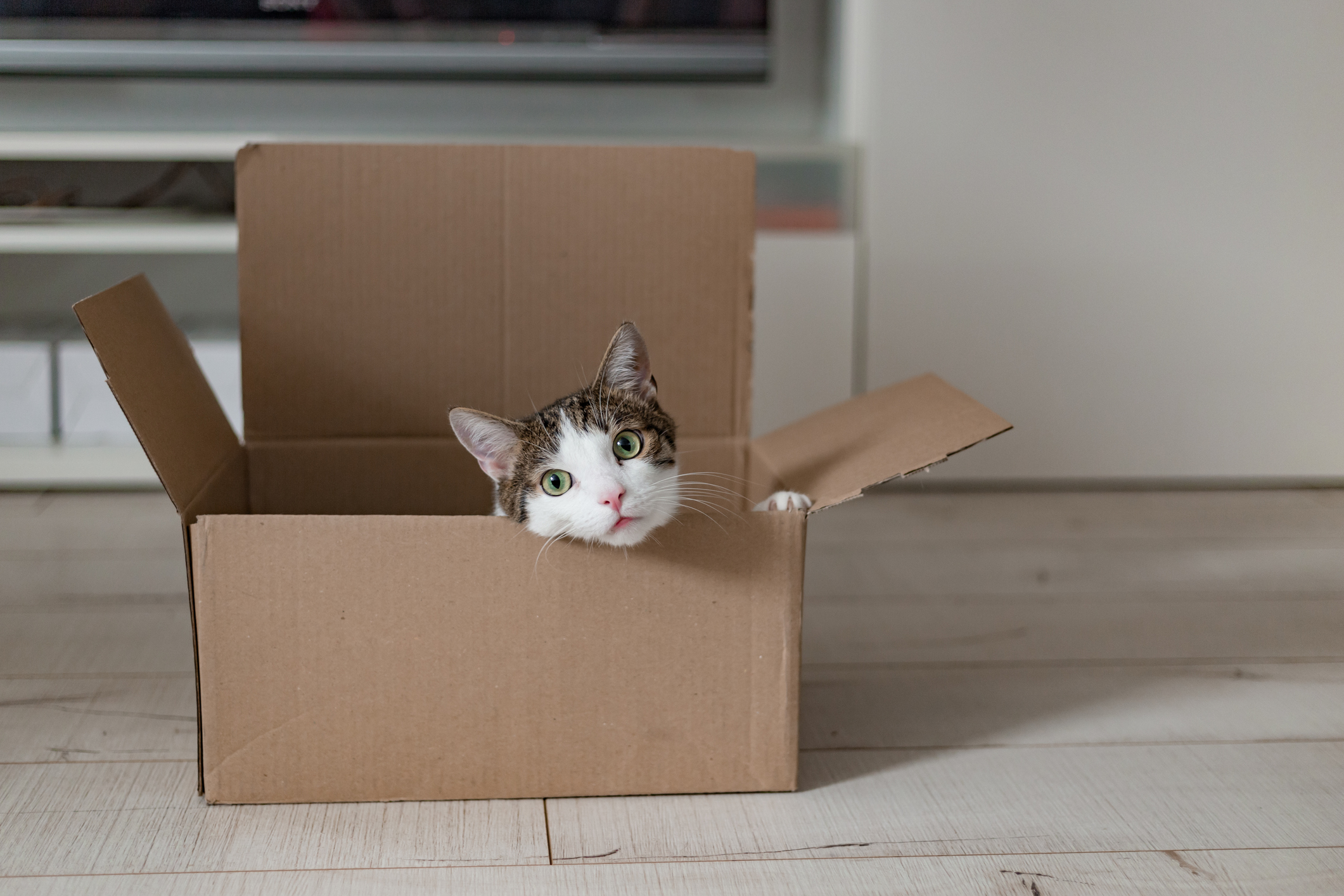
Moving House? Tips to Help Your Cat Adjust to a New Home
Cats are creatures of habit. Over time, they get used to your home, right down to the way the furniture smells and where it’s placed in a room. Thus, even slight changes to their environment are typically noticed—and they’re not always appreciated. Big changes, like moving to a new house, can be even worse.
Change can cause severe stress and anxiety in the calmest of cats. If you’re moving to a new home, you’ll want to be extra cautious about how you help your kitty adjust to the change to ensure their health and happiness. Here are some tips.
As you pack

Merely packing for your move might be a stressful experience for some cats. One day, the furniture and décor are there, and the next day, they’re gone!
To keep your cat as calm as possible as you pack up your home, try to keep one room intact as you pack up the rest of the house. Let this room be your cat’s safe space, complete with their food and water bowls, litter box, toys, bed and carrier. If you’re moving a lot of furniture out at once (which can cause a lot of commotion), it might be helpful to put your cat in that room and close the door to shelter them from the noise and activity.
If packing is a prolonged process for your family, make sure to give your cat lots of love at regular intervals to help them stay calm. Take a break from packing to play with your kitty, groom them or cuddle together. This is also a good time to get your cat used to their crate or carrier, since they’ll need to be in it when you travel to the new home.
Eventually, you’ll need to pack up that last room. Keep your cat’s belongings available as long as possible until you’re actually ready to leave. Then, place them in their carrier until you hit the road.
During the move
The actual moving process can also be stressful for cats, especially since it often requires car travel. How you handle this process might depend on how close your new home is to your old one.
Moving near
If you’re moving to a place nearby, you might want to consider boarding your cat in a pet hotel for a night or two. This allows your family to pack up your final belongings, focus on moving furniture into your new home and start unpacking without worrying about your pet’s stress. They’ll be well taken care of by the pet hotel staff!
If you do this, try to unpack one room as much as possible prior to bringing your cat to the new home. This way, they’ll be able to get used to the new location while being surrounded by familiar furniture and scents.
Moving far
If your new home is farther away, you’ll need to bring your kitty with you during the process. Bring your cat with you in your vehicle and keep them in their carrier, the same way you transport them to their vet appointments. If your cat is an anxious traveler, it may help to use pheromones inside their carrier, calming supplements or possibly an anxiety medication to keep your kitty calm on the road.
Once you arrive to your new home, place your cat and their belongings in one room and help them get settled. It’s best if you set this room up with familiar furniture right away and keep them in this room while you unpack the rest of the house. Pheromone sprays might help them feel at home in the new space, as well as comfort items that smell like you or the old home.
After you’re settled

Even after you’ve arrived in your new home and have unpacked most of your belongings, you’ll still want to be mindful of how your cat adjusts to the move. It’s a good idea to keep your pet in their initial room for a little while before letting them explore the new home slowly, similar to how you’d allow a newly adopted cat to adjust. Pheromone sprays and calming supplements may help ease their stress as they get used to the new surroundings.
Keep your cat’s other routines, including feeding and play time, the same. Maintaining these routines will ensure stability and may help them adjust faster.
Avoid letting your cat outside for at least a month after you’re settled in the new home. Some cats attempt to return to the old home if they haven’t established a bond with the new home, which can lead to a scary situation for you and your pet!
Over the next few weeks, keep an eye on your kitty’s behavior and note any signs of stress. These might include urinating or defecating outside of the litter box, hiding, acting aggressively, meowing excessively or grooming compulsively. Consult your vet if these behaviors do not stop a few weeks after your move, since behavioral training or anxiety medication might be necessary.
With a little patience and extra TLC, your cat should begin to adjust to the new home in no time.


